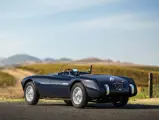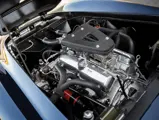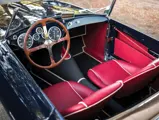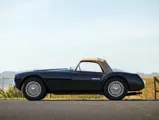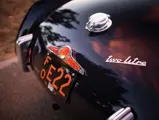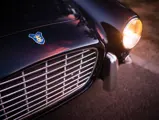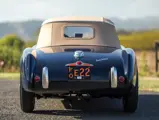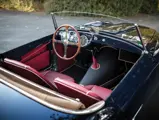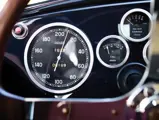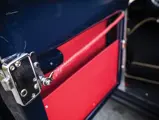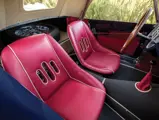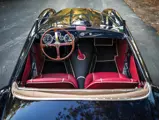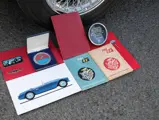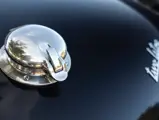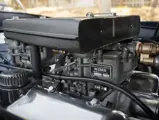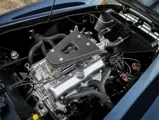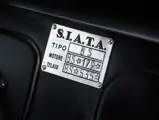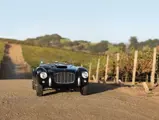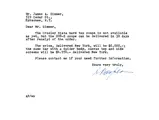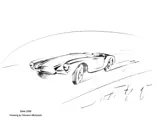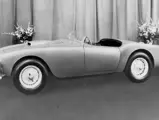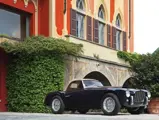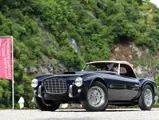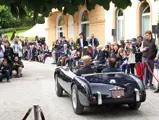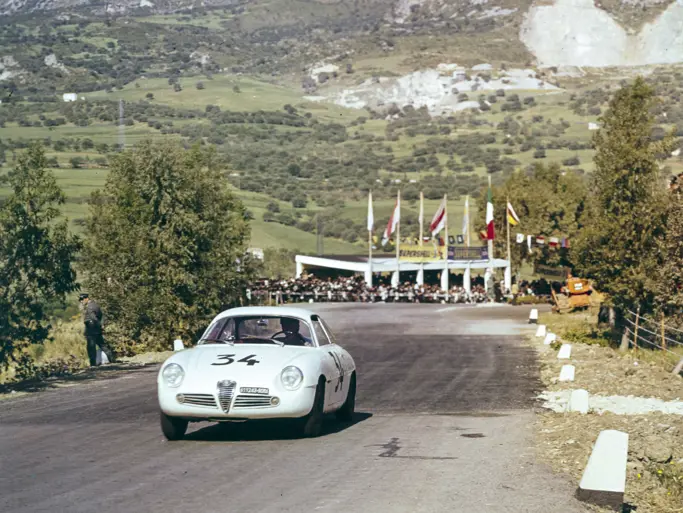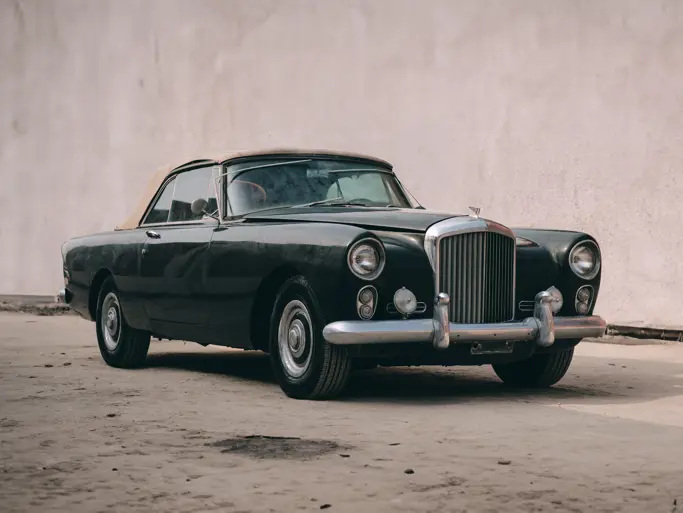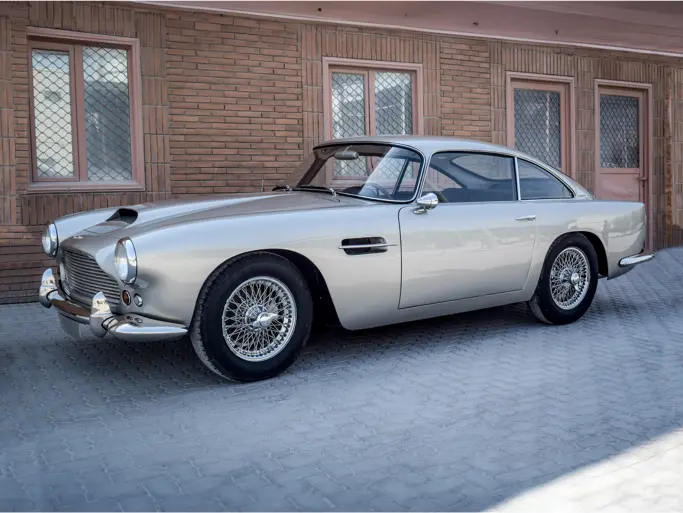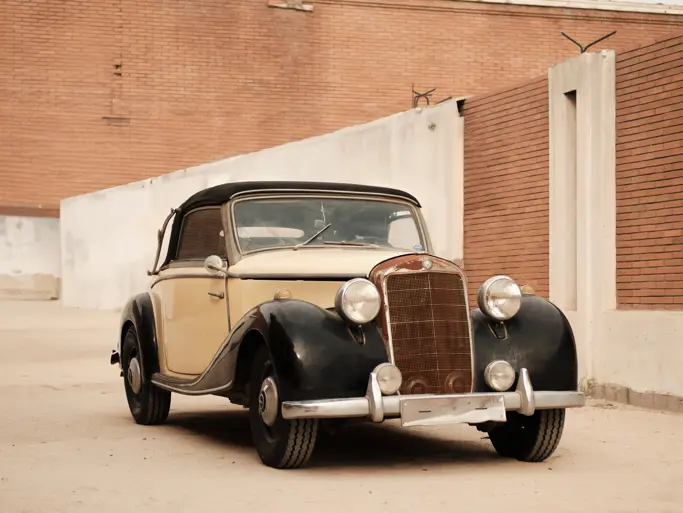New York - Driven By Disruption 2015
1954 Siata 208S Spider by Motto
{{lr.item.text}}
$1,650,000 USD | Sold
 | New York, New York
| New York, New York
{{internetCurrentBid}}
{{internetTimeLeft}}

- Powered by Fiat’s rare Tipo 104 alloy 8V engine
- The last built of 33 Motto-bodied spiders
- Beautiful and authentic restoration completed in 2011; original, matching-numbers engine
- Best in Class at Pebble Beach and Amelia Island, with awards at other international concours
- Race-winning chassis engineering coupled with striking coachwork rendered in aluminum
- Elegance and power in a lightweight package
125 bhp, 1,996 cc OHV 70-degree alloy V-8 engine with twin Weber 36DCZ carburetors, five-speed manual transmission, four-wheel independent suspension with coil springs and shock absorbers, and four-wheel finned alloy drum brakes. Wheelbase: 90.5 in.
“SENSATIONAL NEW ITALIAN SPORTS CAR”
The Siata 208S of the mid-1950s represented a milestone in automotive concept and practice, itself the amalgamation of multiple innovations. For one, the company SIATA was a longstanding tuning specialist rather than a traditional manufacturing concern. This made the Societa Italiana Auto Transformazioni Accessori a qualified disruption to the business of more established brands like Ferrari and Maserati, whose customer base and competition forays were directly threatened by the small company’s remarkably engineered low-volume sports cars.
Furthermore, the 208S was powered by Fiat’s alloy Tipo 104 engine, an unusual two-liter 70-degree V-8 that had been responsible for driving the Turinese manufacturer’s premium Otto Vu Fiat sports car to competition victories across Europe. Only approximately 200 examples of this V-8 engine were made, and when production ceased on the Otto Vu model at about 114 cars, most of the remaining motors were bestowed to Siata (a contractor in the Otto Vu’s build process).
Nearly eight years before Carroll Shelby’s Cobra set the racing world afire with a mass-production V-8 installed in a lightweight aluminum roadster, Siata created a giant killer in 1953 with the alloy-bodied 208S Spider equipped with a high-torque V-8 mated to an advanced five-speed transmission. The open coachwork was penned by Giovanni Michelotti and built by Carrozzeria Motto, a freelance coachbuilder in Turin. Motto had built one-offs for Ferrari in 166 Spider form and 212 export coupes, among others. They received the contract to body the new 208S to Michelotti’s design. With upright rear shoulder flares and a long front deck, the coachwork was a breathtaking evolution of the classic barchetta.
Despite being produced in such a sparing quantity (Motto built just 33 spiders along with the two prototypes by Bertone), the 208S was a marked disruption to the SCCA competition establishment. It surprised more established Italian brands at the races while demonstrating that a small tuning company could deliver cutting-edge chassis specifications, like four-wheel independent suspension and connected steering, at a competitive price.
As such, the marvelously engineered 208S was to become a consummate force in its primary purpose: competitive road racing in the popular under two-liter class. Privateers could buy an exceptionally well-balanced, handsome racecar, with a higher power-to-weight ratio than any comparable opponent, at a somewhat lower price than GT sports cars such as those from Ferrari or Aston Martin. The 208S soon became capable of winning SCCA races, and it was often seen as a cover car for California racing programs in the early 1950s. Actor and noted enthusiast Steve McQueen even entered a Siata in the 1958 Palm Springs Road Races; he called it “my little Ferrari.” The 208S also took the American motoring press to new levels of enthusiasm, with the November 1953 issue of Road & Track calling it the “Sensational New Italian Sports Car.”
CHASSIS NUMBER BS 535
The featured 208S Spider is certainly one of the finest examples extant, benefiting from two long-term periods of custody and recent attention from pedigreed marque experts. Chassis BS 535 was the final example of the Motto-bodied V-8 Spider in the production sequence, and it benefits from a rare factory-equipped five-speed transmission that delivers taller final gearing and corresponding top speed. The car was purchased in 1954 by an unidentified enthusiast in Italy, who imported it to the United States the following year. In the spring of 1956, the beautiful Spider was sold to Fred Celce of Massachusetts, a U.S. Air Force pilot who flew F-100 Super Sabre jets from bases in both the U.S. and the U.K. while on patrol during the Cold War; against these, the Siata made a fitting land-based complement in both form and performance.
Following Captain Celce’s 12-year ownership, the well-maintained Siata was purchased by fellow Massachusetts resident Frank Sweet, and he replaced the engine with a Ford V-8, a relatively common conversion at that time. The rare Fiat motor, BS 179, later passed to noted Siata expert Jarl de Boer, who sold it in turn to Walter Eisenstark, another marque connoisseur. Mr. Eisenstark then purchased BS 535 in 1982 and reunited the car with the original engine, entrusting a three-year restoration to the highly respected Epifani Restorations of Berkeley, California.
In 2009, after 27 years of devoted custody by Mr. Eisenstark, the 208S was purchased by the consignor, a well-known enthusiast who has exhibited his cars to great acclaim at premium concours d’elegance around the world. The owner soon returned the spider to Epifani for a concours-level refinish to original specifications that was completed in the summer of 2011. The fully documented refurbishment quickly began earning awards, starting with a Best in Class at the Pebble Beach Concours d’Elegance in 2011, as well as a second special award for Design Elegance. In 2012, the 208S won a unique Chopard-encased award for the Most Elegant Open Car at the Kuwait Concours d’Elegance amidst the impressive backdrop of Kuwaiti opulence. Returning stateside, the car was featured at the Art Center College of Design’s annual show, earning the People’s Choice Award at one of the most respected institutions in automotive design.
Perhaps BS 535’s most impressive exhibition accolade was achieved in May 2013 when the car, now FIVA certified, was accepted and presented at the Concorso d’Eleganza Villa d’Este on Lake Como in Italy. On the stage of what is arguably the collectible automobile community’s most exclusive and discriminating event, the exquisite Siata drew a Premio d’Onore award, confirming its magnificent state of originality and overall quality. This esteemed honor was followed by one more award of note, a class win at the 2014 Amelia Island Concours d’Elegance, rounding out a winning portfolio at the world’s most elite judged events.
Breathtakingly restored to original factory specifications, including handsome period details such as the Siata five-speed synchromesh gearbox, polished alloy wheels with chrome spokes, a competition-style center fuel filler, wood steering wheel, and leather pull-strap door releases, this 208S is remarkably well documented. It is accompanied by an extensive history file, an original owner’s manual and parts book, a tool roll and jack, a spare hood emblem, and a windscreen. The documentation also includes extensive restoration receipts and numerous photographs detailing the meticulous and period-accurate workmanship required to create an international concours winner.
This fascinating Siata 208S may be displayed and appreciated for its aesthetic perfection and historical significance, an example of sophisticated engineering and light weight disrupting the status quo of brute power. Clearly, it highlights the evolution in automotive design and competition blueprint for success. The rakish Spider may also be enjoyed for its more visceral qualities, ripe for the enthusiast who may wish to experience the Otto Vu’s torquey acceleration and the connected feel of Siata’s famously athletic chassis in today’s historic racing events. The 208S changed American sports car racing’s view of the possible during the early 1950s. As a world-class collectible, chassis number BS 535 is the epitome of ground-breaking innovation coupled with stunning elegance, offering impeccable standards in rarity, design, and quality detailing—an Italian automotive jewel.


